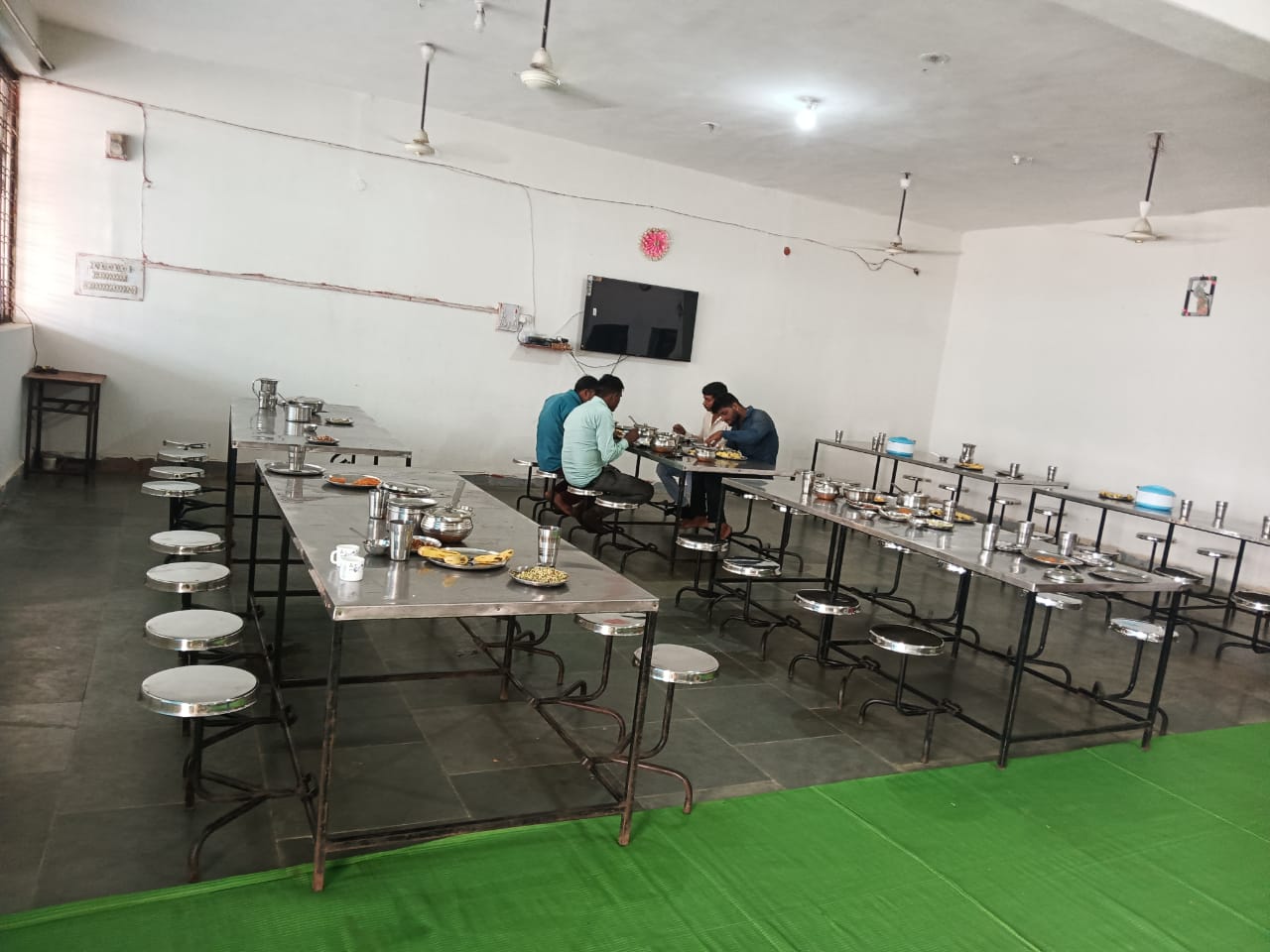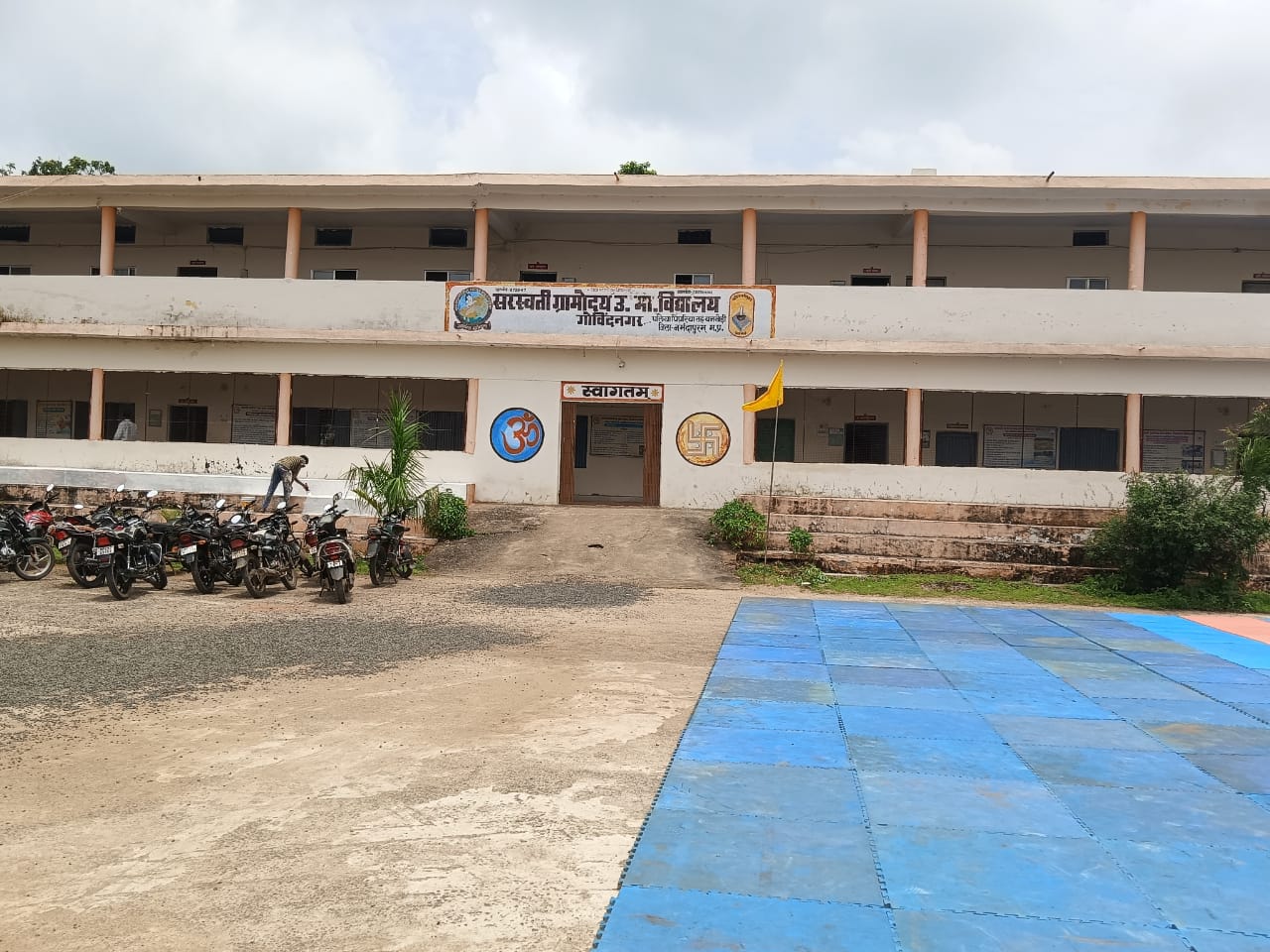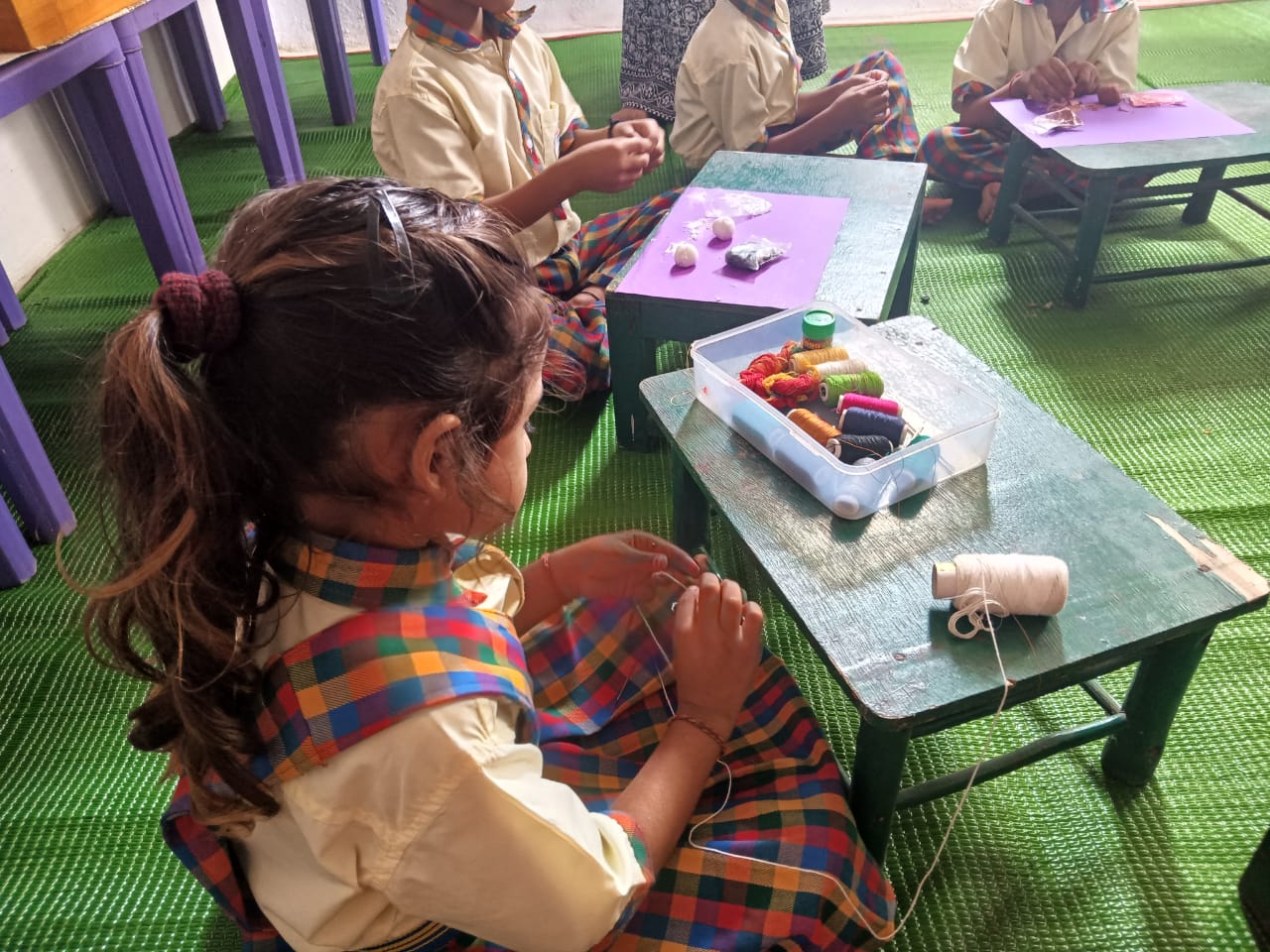The Rashtriya Swayamsevak Sangh (RSS) is known for its selfless works in society, the organisation works with the idea of reviving Bharatiya values in every citizen’s life and each work they do. For every swayamsevak the nation is their mother, and the people living here are their family members, they call it their ‘parivar’. With the idea of serving Bharat, the RSS runs numerous projects with the help of multiple branches and units it has. Some of them are Seva Bharti, Vidya Bharti, Lok Bharti, etc.
These units are doing wonders in their field without expecting any acknowledgement, for instance, the Vidya Bharti unit of Sangh is currently running thousands of schools across Bharat, that provide education to children from all walks of life with a very nominal fee.
On August 14, Organiser sent this correspondent to visit one such Sewa Prakalp managed by Vidya Bharti and Bhausahab Bhuskute Smriti Lok Nyas, located in Govind Nagar, Bankhedi village (175 kilometers from Bhopal).
The nyas comprises multiple units, from Sewa Bharti’s school, which is a mix of modern and gurukul education, to Shishu Vatika, which serves as a kindergarten. Gau sewa, Krishi Vigyan Kendra (KVK), Gram gyanpeeth (self-help groups) providing training, and others. These efforts collectively make the village an ‘Adarsh Gram’.
The following article is a small attempt to describe the efforts made by the organisation to revive the idea of Bharat. This village can serve as a model for others to draw inspiration from.
Saraswati Gramoday Vidyalay
My journey started from the capital city of Madhya Pradesh, Bhopal, on August 14. I took a bus from Bhopal to Bankhedi and reached there in around 3 hours, with a halt in between. I was welcomed at the ‘Sharad Smiri Chhatravas’ where lived the students, studying at the Saraswati Gramoday Vidyalaya. As soon as, I walked into the hostel, a man who was called Bhaiya (warden, Charansevak Prajapati) by other students guided us to the lunch hall. In no time, the students served meals, and while having it, I talked to some of them.
Aryan Yadav, a class 12 student, said he moved from Pachmadhi to this hostel when he was in class 5. Kshitij Kaurav was Aryan’s classmate and moved from Gadarwara to the school, others were Nitin Kaurav, Sumit, and many who were juniors and students of classes 9 and 5, respectively. They were having ‘tilak’ on their foreheads, shoes taken outside the dining hall, and called this correspondent didi.
Asked why they chose this school over others available in their respective cities, they said, “Our elder brothers have studied here, and it was our parent’s decision to send us to Saraswati Mandir only. The education system adopted in the school is unique, they focus more on practical knowledge, and hence this becomes a priority”.
Asked, other than the school activities, what kind of Hindu activities are organised in the school, one said, “Hawan’s and path of Sundarkhand are organised in the school on special occasions, it feels like we are at home”.
A teacher guided me to the school campus, where students from class 4 to Class 12 study. Outside the school campus was a Kabaddi mat, where boys in the kit were practicing Kabaddi. The teacher said it was their sports period.





Reviving the Gurukul culture in school
As soon as I took the first step at the school entrance, students were working on big computers, some were compact, and others were the usual tabletop personal computers. The teacher said these were Class 9 students learning computer languages like C, C++, Java and others.
There were multiple labs as we moved upstairs, in the Gramoday Tinkering Lab, the students were working on an electric circuit, both the boys and the girls. They were provided with workbooks where instructions were written on how to build a circuit. The teacher said, these were students of Class 9. He proudly shared that students here learn how to make robots, and same projects are given to them for exams. He showed some of the models placed on the lab, like the smart dustbin, sensor gate and others.
The education system at the school relies more on practical knowledge than theory.
Then we moved to the other building, where students from classes 4 to 7 studied. As soon as I entered the campus, I saw girls sitting on the floor, making something. As I walked closer, I saw some of them were making Rakhi, Kalash and some decorative items, while others were drawing Hena on each other’s palms. The teacher said this was an art class. Beside this hall were students carrying cardboard with the names of the planets in the solar system, the students were in Class 4. The teacher used these cutouts to teach students about the solar system. Beside this room was an English lab, where multiple interesting gadgets and tools were used to teach grammar. Some of them are listed below:








Notably, in this school, there are 1016 students enrolled at present, under the supervision of 56 teachers. As many as 80 students live in the hostels. The administration at the school says, considering the News Education Policy (NEP), the students are also taking the Kaushal Vikas Training at the school, which includes motor binding, electrical training, murti making, pottery, bamboo artefacts, and others.
It is pertinent to mention that students in the board exams have performed well in the 2022-23 session. The result was 100 percent for the class 12 students, out of 52 students 50 secured first division. Out of these 50, 41 students received a Rs 25,000 cheque from the Chief Minister for securing more than 85 percent marks in the board exams.

One of its kind Shishu Vatika
From the school, the administration took this correspondent to the Shishu Vatika which was nearly 1000 meters from where the school was located. The first site of the Shishu Vatika was students playing outside the school where there were swings and other playing equipment. They were learning counting, tables and the alphabet by jumping and skipping.
What grabbed this correspondent’s attention the most were the students at the kindergarten performing havan, amidst chants of Gayatri Mantra and Mrityunjaya Mantra. The teacher (Shweta Meena) explained that this is a practice at the Shishu Vatika, when the student comes to the school, he or she performs havan, followed by Saraswati Vandana, Bharat Mata Vandana and the national anthem.
Notably, the Shishu Vatika was distributed into 12 basic sections where the children were taught basic things about life, just like the ‘Gurukuls’. These sections include Chitra Pustakalay (a picture gallery), acting, science lab, museum, art gallery, workshop, fair, house, birdhouse, swimming pool, playground, and garden.
In these classes, the students were taught multiple things; for instance, in the house section, they were taught how things are done in a house, without any gender barrier. Some of these works include cleaning of grains, worshipping gods, folding dresses, watching TV, eating food and much more. It was very interesting that housework was given such importance at the school.
As per the Sanatan Dharma, the children are provided with ‘Suvarn Prashan’ where children from birth to 12 years are given a mixture of ghee, honey, and others to keep them healthy on every pushya nakshatra.
Some pictures from these classrooms can be seen here:







Gram Gyanpeeth (self-help groups)
Other than focusing on young minds, the Sewa Prakalp is also providing jobs and training to the villagers in Bankhedi. These include providing training for bamboo artefacts and furniture, clay utensils, incense sticks, pottery, Murti making, and much more. Other than learning at the centre, the locals also get money for working on the projects.
As many as 6,000 workers have received training related to Bans Shilp in the centre; they are now working in the commercial sector, other than this they also learn how to get documentation done for exporting the products they make.
Other than the bamboo work, to empower the Kumhar community, training are provided for pottery and the wheel. As many as 4,000 Kumhar have taken training from the centre. Around 934 families from the nearby 22 villages are provided with the eclectic potter wheel for free by the sewa nyas.
Notably, the locals are also trained in Murti Kala, and this serves as a job for them.


Krishi Vigyan Kendra (KVK) and Udyan
The KVK set up in Govind Nagar at the Barkhedi village promotes natural farming in the region, including the adjoining districts. In the past year, the KVK produced 34.6 quintals of wheat, 17.6 quintals of lentils like Moong and others, and 322.2 quintals of paddy.
The KVK issued soil cards to each and every farmer in the region, this was done after a soil testing lab was set up in the KVK in 2017.
Other than the KVK, there is a farm where seasonal fruits are grown and supplied to nearby areas, managed by the villagers. The fruit-giving trees include 1140 guava trees, 506 mango trees, 40 Chiku trees, 100 Orange trees, 47 custard apples, and many more. All these trees are planted in an area of 7 acres.
Gau Seva Prakalp
Notably, beside the KVK there is a registered Gau Seva Kendra, under the Madhya Pradesh Gau Samvardhan Board. The Gau Shala was built to take care of 100 cows and as of now it houses and looks after 109 cows and their calves.
The cow dung is utilised in farming, and the milk is sold in the village and nearby areas. This unit provides jobs to many villagers. There is a biogas plant as well.
This was the last spot I visited in the village. The locals were cheered up as they shared their journey. As it was August 15, the next day, women from the village assembled at the KVK and they were preparing dresses and tricolour waves for the students participating in the events. They were doing it for free, some have breastfed kids as well. This is what happens when instead of developing a village or place, we develop humans living there. There was no feeling of us and his in the village, it looked like their house. They say, “Mera Gao mera tirth”.

Bhau Sahab Bhuskute Smriti Lok Sewa Nyas
It is pertinent to mention that all these units were set up in addition to the idea of an ‘Adarsh Gram’ under the Bhau Sahab Bhuskute Smriti Lok Sewa Nyas. The Nyas was set up in the memory of Bhau Sahab on August 22, 1991.
Notably, the Sangh Karya started in Harda district in 1937 during the stay of Babasaheb Apte in Harda, but in the beginning, it remained irregular. In the year 1939, Govind Rao Upakhya Bhausaheb Bhuskute returned home to his father after completing his studies in Nagpur and he started travelling continuously for Sangh karya. Then, with the network of branches spreading in the entire department, the Harda branch also got stability. By the year 1945, the work expanded rapidly in Harda Nagar and Tehsil.
In 1933 he came in contact with Dr. Hedgewar. Bhausaheb passed BA Honors in 1937, MA in 1938 and law examinations in 1939 in first class. During this, he also completed the training of Sangh Varg and started going to the Sangh Varg across the country every year as a teacher in the Varg. He later became Grihasth Pracharak in the RSS. Later, he also worked as Prant Karyawah and Kshetra Pracharak. He was among those who served jail term following the death of Mahatma Gandhi. Unfortunately, he died in 1991.
This Nyas, is dedicated to his tireless efforts in revising the idea of Sangh in the Madhya Kshetra. The Bankhedi located Sewa Nyas can become a better example of the multiple faces of Hindu society. From providing interactive education to children, imparting cultural knowledge in basic education, following the Gurukul system and later returning back to agriculture, uniting the village as a family to work for each other. This is a true example of Hindu Samaj and the Sangh Samaj.
Also, Vidya Bharati (short for Vidya Bharati Akhil Bharatiya Shiksha Sansthan) is the educational wing of Rashtriya Swayamsevak Sangh (RSS). It runs one of the largest private networks of schools in India, operating 12,000 schools with over 3.2 Million students, as of 2016. It has its registered headquarters in Lucknow with a functional headquarters in Delhi and a sub-office in Kurukshetra. In the year 2020, the Million Lives Club selected Vidya Bharati as an official member of the Vanguard cohort for its contribution to school education.
It is noteworthy that, Seva Bharati is a non-governmental organization (NGO) working among the economically weaker sections of Indian society, including tribal (vanvasi communities). It also works among urban slum dwellers and resettlement colonies by introducing welfare and social service programs, such as free medical assistance, free education, and vocational training.




















Comments